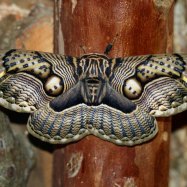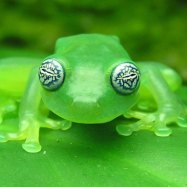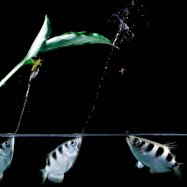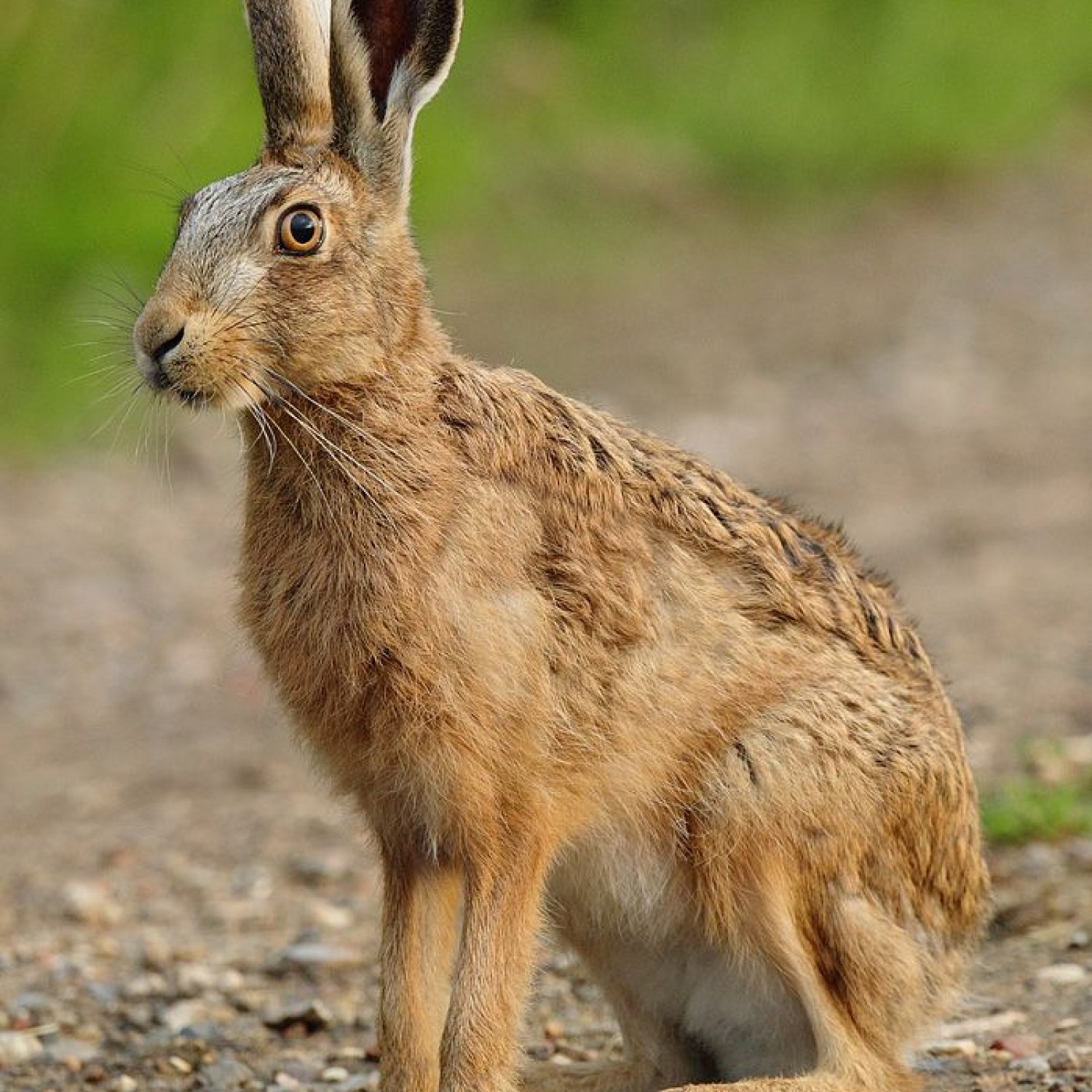
Hare
45-70 cm
Hares, slim and elongated mammals belonging to the Leporidae family, can be found in various locations around the world. With a length of 45-70 cm, these animals are known for their lightning-fast speeds and unique reproductive behaviors. Despite their similar appearance to rabbits, hares have longer ears and hind legs. Keep an eye out for these agile creatures on your next outdoor adventure! #Hare #Leporidae #Wildlife
Animal Details Summary:
Common Name: Hare
Kingdom: Animalia
Habitat: Grasslands, meadows, forests
The Graceful Hare: A Fascinating Creature of the Animal Kingdom
With its slender and elongated body, the hare is certainly a graceful creature of the animal kingdom. Known scientifically as Lepus, this animal belongs to the class Mammalia, under the order Lagomorpha and family Leporidae. Hares can be found in various locations around the world, from the grasslands of Europe and Asia to the forests of North America. Its natural habitat includes grasslands, meadows, and forests, making it a versatile animal that can adapt to different environments Hare.The Hare, like most rabbits, is a herbivorous animal, feeding on a variety of plant materials. But what sets the Hare apart from other rabbits is its unique physical and behavioral characteristics, making it an interesting subject for naturalists and animal researchers. In this article, we will explore the fascinating features of the Hare and learn more about this magnificent creature.
The Physical Characteristics of the Hare
The first thing that comes to mind when we think of a Hare is its distinct body shape - slim and elongated. This body shape is what makes the Hare an excellent runner, reaching speeds of up to 70 km/h (43 mph). Its long and powerful hind legs, with four toes on each foot, give it the ability to leap and change direction quickly. This makes it an elusive prey for predators such as foxes, wolves, and eagles.
The Hare's coat is another striking feature, which can vary in color from species to species. Some hares have coats of grey or brown, while others have a reddish-brown or sandy color Hepatic Tanager. This natural coloration helps the Hare blend in with its surroundings, providing camouflage and protection from predators. In winter, hares living in colder regions have the ability to change their coat color to white, a process known as molting. This helps them stay hidden in the snow-covered landscape, providing another layer of protection.
The Life and Behavior of the Hare
Like most animals, the hare has a social life, and they are generally found living in groups or colonies. They are mostly active at dawn and dusk, and during the night, they spend their time foraging for food. Hares are also solitary animals, meaning they spend most of their time alone, except during the breeding season, when they look for a mate.
The behavior of the Hare is also quite intriguing. One of its unique behaviors is its incredible jumping ability, which can reach up to 3 meters (10 feet) in a single leap. This skill comes in handy when the Hare encounters predators or needs to navigate through its environment. The Hare also has a keen sense of smell and can detect predators from great distances, allowing it to escape quickly.
Reproduction and Maturity
Hares reach sexual maturity at the age of one year, and the breeding season generally occurs from February to August. During this time, males compete for dominance and the opportunity to mate with females. Unlike rabbits, hares do not dig underground burrows but instead use shallow depressions in the ground as nests for their young. These nests, known as forms, are lined with grass and fur from the mother's coat to keep the young hares warm and protected.
The gestation period for hares is around 41-42 days, after which the female gives birth to an average litter size of 2-4 leverets. These young hares are born with a full coat of fur and their eyes open. They are weaned by their mother for about two weeks, after which they are ready to fend for themselves. However, they will stay near their mother and continue to learn survival skills until they reach adulthood.
The Importance of the Hare in Ecosystems
The Hare plays a crucial role in the ecosystems it inhabits. As a herbivorous animal, it helps control the growth of plants, thus maintaining the balance of plant life in its habitat. The Hare is also a vital part of the food chain, serving as prey for various predators. Its large litter size and quick reproductive rate help ensure a steady food source for predators that depend on it.
Moreover, the Hare's habit of grazing and defecating in the same areas provides fertilizer for the plants, contributing to the nutrient cycle of the ecosystem. In this way, the Hare plays a significant role in maintaining the health and balance of its environment.
The Hare and Humans: Friend or Foe?
The relationship between humans and hares has varied throughout history. In some cultures, the Hare is seen as a symbol of good luck and prosperity, while in others, it is considered a nuisance, especially in agricultural areas. As a herbivorous animal, hares can cause damage to crops, leading some farmers to view them as pests.
However, the Hare also has its value in the human world. In some countries, hares are hunted for their meat, which is considered a delicacy. The Hare's skin is also used to make fur coats and hats, and in some parts of the world, its manure is used as fertilizer for crops. Moreover, the Hare's role in maintaining healthy ecosystems is essential for human communities that depend on these environments for resources and livelihood.
In Conclusion
The Hare, with its elegance and agility, is undoubtedly a remarkable creature that has captured the interest and curiosity of humans for centuries. Its physical and behavioral characteristics make it an intriguing subject for scientists and a vital part of the ecosystems it inhabits. Despite its sometimes detrimental interactions with humans, the Hare continues to thrive and play a crucial role in the natural world.
So, the next time you come across a Hare, take a moment to appreciate its beauty and unique features. And if you're lucky enough to spot one darting through the fields, remember that you are witnessing one of nature's most graceful creatures in action.

Hare
Animal Details Hare - Scientific Name: Lepus
- Category: Animals H
- Scientific Name: Lepus
- Common Name: Hare
- Kingdom: Animalia
- Phylum: Chordata
- Class: Mammalia
- Order: Lagomorpha
- Family: Leporidae
- Habitat: Grasslands, meadows, forests
- Feeding Method: Herbivorous
- Geographical Distribution: Europe, Asia, North America
- Country of Origin: Various
- Location: Various
- Animal Coloration: Varies by species
- Body Shape: Slim and elongated
- Length: 45-70 cm
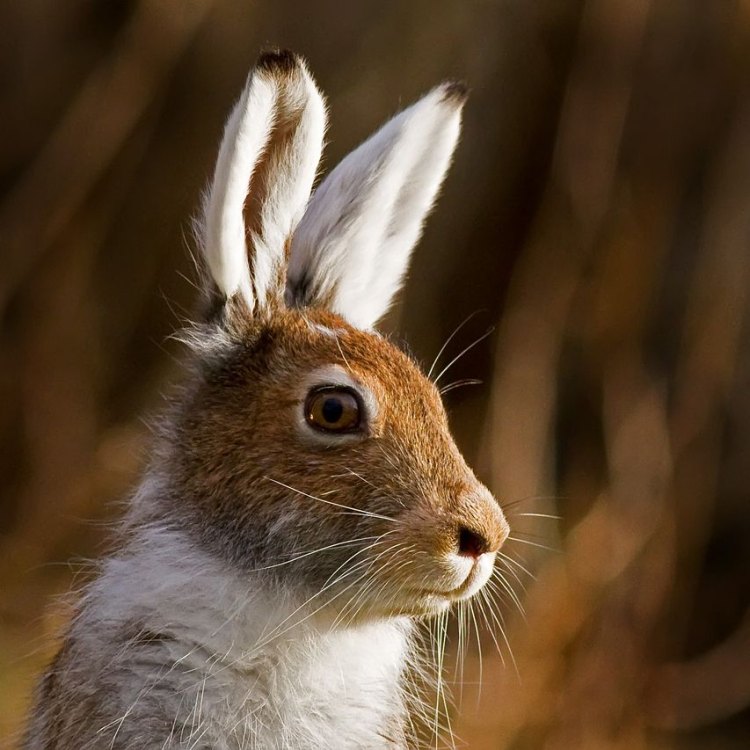
Hare
- Adult Size: Medium-sized
- Average Lifespan: 3-5 years
- Reproduction: Sexual
- Reproductive Behavior: Polygynous
- Sound or Call: Loud screech or scream
- Migration Pattern: Some species migrate
- Social Groups: Solitary or live in small groups
- Behavior: Fast and agile runners
- Threats: Hunting, habitat loss
- Conservation Status: Varies by species
- Impact on Ecosystem: Important prey species
- Human Use: Food, fur
- Distinctive Features: Long ears and hind legs, large eyes
- Interesting Facts: Hares are larger and faster than rabbits
- Predator: Various predators
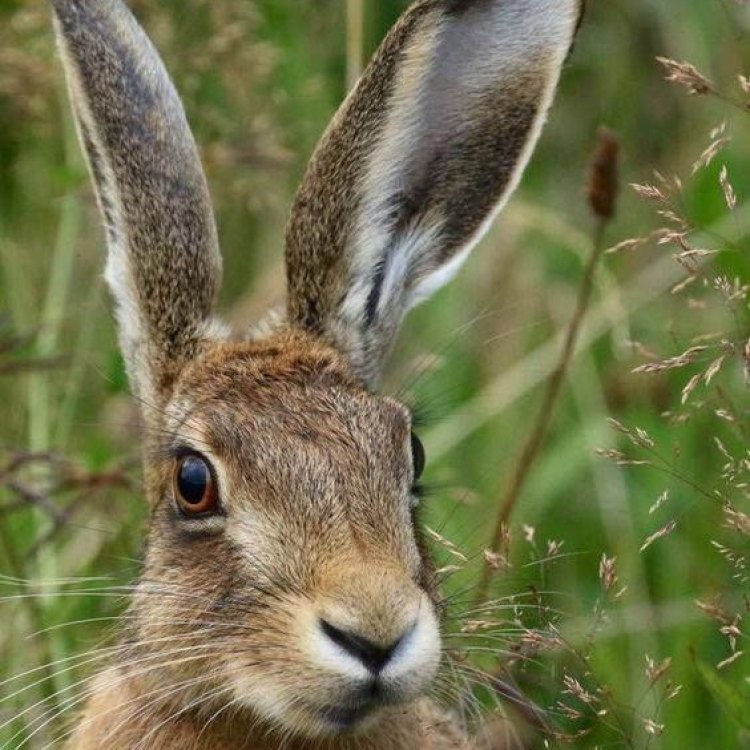
Lepus
The Fascinating World of Hares: A Closer Look at their Traits and Role in the Ecosystem
When it comes to animals, there's no denying that they come in all shapes and sizes, each with their own unique set of characteristics and behaviors. But one animal, in particular, stands out with its distinctive features and interesting behaviors - the hare.Hares are medium-sized mammals that belong to the family Leporidae, along with rabbits, pikas, and other similar animals. They are found in various parts of the world, from North America and Europe to Africa and Asia, and are known for their fast pace and agility PeaceOfAnimals.Com.
But beyond their undeniable cuteness and speedy nature, hares have so much more to offer. In this article, we'll dive deeper into their world and explore their fascinating traits and how they contribute to the ecosystem.
Size and Lifespan
Hares are slightly larger than rabbits, ranging from 16-28 inches in length and weighing anywhere from 4-15 pounds, depending on the species. They are covered in soft fur, usually in shades of brown, gray, or white, to help them blend into their natural habitat.
On average, hares live for about 3-5 years in the wild, but some have been known to live up to 12 years. However, their lifespan can be significantly shorter in areas where they face high levels of predation.
Reproductive Behavior
Hares reproduce sexually, with males competing for females during breeding season. They have a polygynous mating system, meaning one male hare may mate with multiple female hares.
During the mating ritual, males will chase and fight each other, using their hind legs to kick their competitors Hawaiian Crow. This behavior is known as "boxing" and is often mistaken for play or aggression, but it is actually a way for males to establish dominance and win over a female.
Once a female has chosen her mate, she will give birth to an average of 3-4 leverets, which are the young hares. Unlike rabbits, hares do not dig burrows for their young. Instead, they give birth in shallow depressions in the ground and cover their young with grass and fur. This allows the mother to leave and return to her young without drawing attention from predators.
Sound and Migration Patterns
Hares are known for their loud screech or scream, which they use as a warning call when they sense danger. This sound can also be heard during the breeding season when males are competing for females.
While some species of hares are sedentary, others are known to have a migratory pattern, especially those living in colder regions. These hares travel to warmer areas in search of food and better shelter during the harsh winter months.
Social Groups and Behavior
Hares have a solitary nature and prefer to live alone. However, they may occasionally come together in small groups for protection and to share resources.
As mentioned earlier, males will fight for dominance and to win over a female during breeding season. They are also known for their fast and agile running abilities, reaching speeds of up to 45 miles per hour. This allows them to evade predators, thanks to their long hind legs, which are perfect for jumping and running.
Threats and Conservation Status
One of the primary threats to hares is hunting for food and fur. In some cultures, hares are considered a delicacy, and their fur is used in the fashion industry. This has led to a decline in some hare species' populations, making their conservation status vary depending on the species and their location.
In addition to hunting, habitat loss plays a significant role in hares' decline, as they rely on natural open grasslands to thrive. Human activities such as agriculture and urbanization have resulted in the fragmentation and destruction of their habitat.
Impact on Ecosystem
Hares play an essential role in their ecosystems as an important prey species for many predators, such as foxes, wolves, and birds of prey. By controlling the hare population, it helps balance the food chain, which in turn impacts various other species' populations.
Furthermore, hares are herbivores, feeding on a wide variety of plants and contributing to seed dispersal and nutrient cycling in their habitats. They are also a source of food for many scavengers, completing the cycle of life in their ecosystem.
Human Use
Humans have a significant impact on hares, both positively and negatively. On one hand, hares have been a valuable food source for people in many cultures and have also been used for their fur and as pets. However, this has also led to hare species' overhunting and decline in populations.
But on the other hand, humans have also played a role in conserving and protecting hares through conservation efforts, awareness, and creating wildlife sanctuaries.
Distinctive Features and Interesting Facts
One of the most well-known distinctive features of hares is their long ears and hind legs, which help them detect predators and escape quickly. However, did you know that this is not the only difference between hares and rabbits?
While they may look similar, hares are actually larger and faster than rabbits. They have longer hind legs and leaner bodies, allowing them to run and jump with ease. Hares also have larger eyes, adapted for their nocturnal lifestyle.
Some interesting facts about hares include the fact that they are one of the few mammals that can produce two types of droppings - hard pellets and soft droppings. These soft droppings are then re-ingested, allowing the hare to extract maximum nutrients from its food.
Another unique behavior of hares is their "body flip" or "binkying," where they run, jump, twist, and kick in mid-air. This is often observed in young hares playing and practicing their maneuvering skills.
Predators
Hares have a variety of predators, including foxes, wolves, coyotes, domestic dogs, cats, birds of prey, and snakes. These predators play a vital role in regulating their populations and ensuring the survival of the fittest.
In some areas, humans are also considered predators to hares, as they hunt them for food and fur. This has led to a decline in some hare species' populations, making conservation efforts even more critical.
The Beauty of Hares
In conclusion, hares are not just cute and fast animals; they are essential contributors to their ecosystems and play a significant role in maintaining balance and diversity. With their distinctive features, interesting behaviors, and role in human culture, hares deserve our appreciation and attention. So the next time you spot a hare in the wild, take a moment to appreciate their beauty, but also remember to be mindful of the impact we have on their existence.
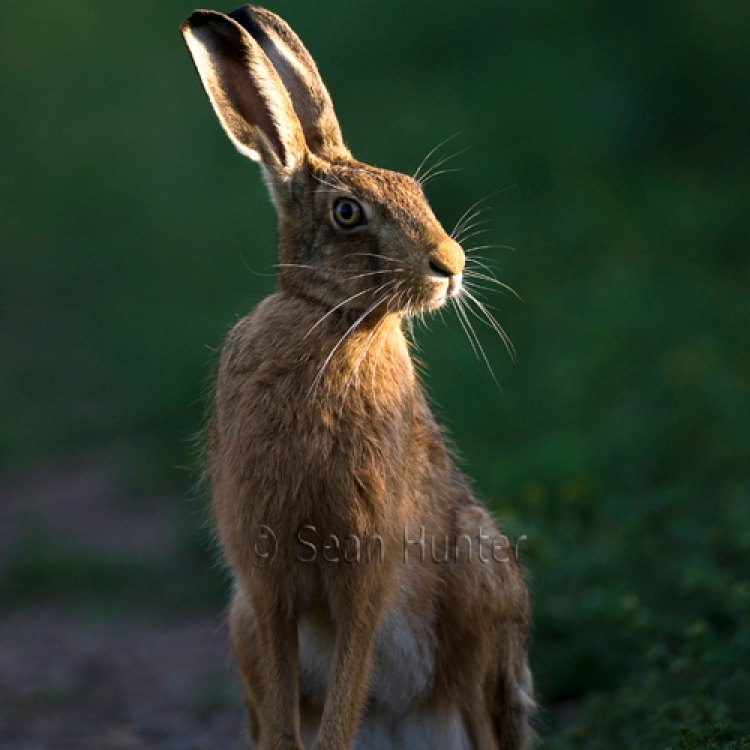
The Graceful Hare: A Fascinating Creature of the Animal Kingdom
Disclaimer: The content provided is for informational purposes only. We cannot guarantee the accuracy of the information on this page 100%. All information provided here may change without prior notice.






